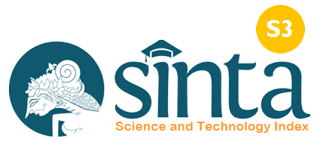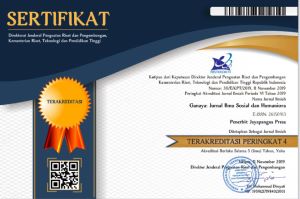Penerapan Strategi Interaksi Kelas dalam Pembelajaran Membaca dengan Perspektif Pembelajaran Berdiferensiasi di Sekolah Dasar
DOI:
https://doi.org/10.37329/cetta.v8i4.4832Keywords:
Classroom Interaction Strategies, Reading Instruction, Differentiated Instruction Approach, Elementary SchoolAbstract
This study aims to describe the implementation of differentiated classroom interaction strategies in reading instruction for third-grade students at SD Negeri 03 Nglebak, Tawangmangu, and to explain the underlying concept of differentiated learning applied in the process. This research employed a descriptive qualitative approach with data collected through interviews, observations, and document analysis. The findings reveal that the differentiated classroom interaction strategy was implemented by adjusting learning activities to students’ needs, interests, and learning profiles. The teacher grouped students based on their reading proficiency levels and provided varied tasks aligned with each group’s characteristics. Classroom interactions occurred flexibly through small-group discussions, individual guidance, and collaborative work. The differentiated learning practices were grounded in constructivist, humanistic, and multimodal approaches, emphasizing recognition of each student’s unique potential. Evaluation and feedback were provided in diverse forms to allow all students to demonstrate their understanding optimally. This study contributes to strengthening differentiated learning practices in elementary education and supports the development of adaptive classroom interaction strategies responsive to student diversity.
References
Achmad, W. K. S., Rachman, S. A., Aras, L., & Amran, M. (2024). Differentiated Instruction in Reading in Elementary Schools: A Systematic Review. International Journal of Evaluation and Research in Education (IJERE), 13(3), 1997–2005.
Afghani, D. R., Prayitno, H. J., Jayanti, E. D., Zsa-ZsaDilla, C. A., Salsabilla, T. A., Saputri, E. D., … & Siswanto, H. (2022). Budaya Literasi Membaca di Perpustakaan untuk Meningkatkan Kompetensi Holistik bagi Siswa Sekolah Dasar. Buletin KKN Pendidikan, 4(2), 143–152.
Ayuni, M. D., Dwijayanti, I., Roshayanti, F., & Handayaningsih, S. (2023). Analisis Karakteristik Peserta Didik Melalui Asesmen Diagnostik (Studi Kasus: Kelas 6 SDN Pandean Lamper 04). Innovative: Journal of Social Science Research, 3(2), 3961–3976.
Darmuki, A., Nugrahani, F., Fathurohman, I., Kanzunnudin, M., & Hidayati, N. A. (2023). The Impact of Inquiry Collaboration Project-Based Learning Model of Indonesian Language Course Achievement. International Journal of Instruction, 16(2), 247–266.
Ervilia, S., & Fauzi, A. (2024). Implementasi Pendekatan Kooperatif dan Kolaboratif Berbasis Pembelajaran Berdiferensiasi pada Siswa Sekolah Dasar. Edu Cendikia: Jurnal Ilmiah Kependidikan, 4(1), 66–71.
Fitriyana, I., Juhana, J., & Nirmala, S. D. (2024). Pengaruh Strategi Pembelajaran Berdiferensiasi terhadap Literasi dan Numerasi Siswa Sekolah Dasar. Jurnal Studi Guru dan Pembelajaran, 7(1), 439–453.
Gheyssens, E., Coubergs, C., Griful-Freixenet, J., Engels, N., & Struyven, K. (2022). Differentiated Instruction: The Diversity of Teachers’ Philosophy and Praxis to Adapt Teaching to Students’ Interests, Readiness, and Learning Profiles. International Journal of Inclusive Education, 26(14), 1383–1400.
Giyatmi, S., Yudiyanto, Y., & Veronica, U. P. (2024). Analisis Implementasi Metode Struktur Analitik Sintetik (SAS) terhadap Keterampilan Membaca Permulaan Peserta Didik Kelas 1 Sekolah Dasar. Jurnal Pendidikan, 33(1), 477–484.
Hafidah, H., Bahri, A., & Khaltsum, U. (2024). Effectiveness of Differentiated Learning in Improving 4th-Grade Reading Skills at MIS Masino. Curricula: Journal of Curriculum Development, 4(2), 1139–1150.
Hidayaturrohmah, N., Pancawati, N., Nugrahani, F., & Veronika, U. P. (2024). Model Pembelajaran untuk Mengembangkan Keterampilan Membaca Peserta Didik di Kelas Rendah. Jurnal Pendidikan, 33(1), 485–496.
Isnaini, R., Kurniawan, A., Marjito, M., & Pratiwi, V. U. (2024). Perpustakaan Digital Meningkatkan Literasi Dongeng pada Siswa Sekolah Dasar. Jurnal Pendidikan, 33(2), 525–536.
Laraswati, A., & Setyaningtyas, E. W. (2023). Efektivitas Pembelajaran Berdiferensiasi Model Complex Instruction dan CIRC (Cooperative Integrated Reading and Composition) terhadap Kemampuan Membaca Pemahaman untuk Siswa Sekolah Dasar Kelas IV. Jurnal Ilmiah Dikdaya, 13(2), 341–354.
Marlina. (2019). Panduan Pelaksanaan Model Pembelajaran Berdiferensiasi di Sekolah Inklusif. Padang: Universitas Negeri Padang.
Munajah, R. (2017). Hubungan Penguasaan Kosakata dan Berpikir Kritis dengan Kemampuan Membaca Pemahaman (Penelitian Kuantitatif Asosiatif di Kelas IV SD Negeri Banjarsari 5 Serang Kecamatan Cipocok Kota Serang). Jurnal Ilmiah Pendidikan Guru Sekolah Dasar, 1(1).
Nugrahani, F. (2017). Pendidikan Karakter Melalui Pembelajaran Bahasa Indonesia dengan Materi Membaca Novel Sastra. Edudikara: Jurnal Pendidikan dan Pembelajaran, 2(2), 113–125.
Nugrahani, F., Am, A. I., & Widayati, M. (2020). Gerakan Literasi Sekolah Berbasis Kearifan Lokal dan Kontribusinya bagi Pendidikan Karakter. Widyaparwa, 48(1), 50–64.
Pidrawan, I. G. A., Rasna, I. W., & Putrayasa, I. B. (2022). Analisis Strategi, Aktivitas, dan Hasil Belajar Siswa dalam Pembelajaran Menulis yang Diampu oleh Guru Penggerak Bahasa Indonesia di Kota Denpasar. Jurnal Pendidikan dan Pembelajaran Bahasa Indonesia, 11(1), 75–86.
Pratiwi, V. U., Nugrahani, F., Widayati, M., Sudiyana, B., & Isnaini, R. (2024). Meningkatkan Literasi Digital dengan Menggunakan Karakter Wayang untuk Siswa Sekolah Dasar di Kabupaten Sukoharjo. Proceedings Series on Social Sciences & Humanities, 20, 140–148.
Rasyad, I., & Wulandari, S. R. (2024). Strategi Guru dalam Mengoptimalkan Interaksi Siswa di Kelas. Jurnal Multidisiplin Ilmu Akademik, 1(4), 81–88.
Roberts, J. L., & Inman, T. F. (2023). Strategies for Differentiating Instruction: Best Practices for the Classroom. New York, NY: Routledge.
Rohman, A. (2022). Literasi dalam Meningkatkan Kemampuan Berpikir Kritis di Era Disrupsi. EUNOIA (Jurnal Pendidikan Bahasa Indonesia), 2(1), 40–47.
Saputro, E. W., Rakhmawati, A., & Sunarso, R. (2024). Implementasi Pendekatan Teaching at the Right Level (TaRL) melalui Pembelajaran Berdiferensiasi pada Mata Pelajaran Bahasa Indonesia di SMP Negeri 1 Surakarta. BLAZE: Jurnal Bahasa dan Sastra dalam Pendidikan Linguistik dan Pengembangan, 2(1), 179–192.
Tomlinson, C. A. (2022). Everybody’s Classroom: Differentiating for the Shared and Unique Needs of Diverse Students. New York, NY: Teachers College Press.
Tomlinson, C. A., & Jarvis, J. M. (2023). Differentiation: Making Curriculum Work for All Students Through Responsive Planning & Instruction. In Systems and Models for Developing Programs for the Gifted and Talented (pp. 599–628). New York, NY: Routledge.
Wahyudi, S. U., Nugrahani, F., & Widayati, M. (2023). Pengembangan Media Pembelajaran Google Sites untuk Meningkatkan Motivasi Siswa dalam Pembelajaran Bahasa Indonesia. Al-Madrasah: Jurnal Ilmiah Pendidikan Madrasah Ibtidaiyah, 7(3), 1064–1082.
Downloads
Published
How to Cite
Issue
Section
License
Copyright (c) 2025 Enny Suryanti, Farida Nugrahani, Veronika Unun Pratiwi

This work is licensed under a Creative Commons Attribution-ShareAlike 4.0 International License.
An author who publishes in the Cetta : Jurnal Ilmu Pendidikan agrees to the following terms:
- Author retains the copyright and grants the journal the right of first publication of the work simultaneously licensed under the Creative Commons Attribution-ShareAlike 4.0 License that allows others to share the work with an acknowledgement of the work's authorship and initial publication in this journal
- Author is able to enter into separate, additional contractual arrangements for the non-exclusive distribution of the journal's published version of the work (e.g., post it to an institutional repository or publish it in a book) with the acknowledgement of its initial publication in this journal.
- Author is permitted and encouraged to post his/her work online (e.g., in institutional repositories or on their website) prior to and during the submission process, as it can lead to productive exchanges, as well as earlier and greater citation of the published work (See The Effect of Open Access).
Read more about the Creative Commons Attribution-ShareAlike 4.0 Licence here: https://creativecommons.org/licenses/by-sa/4.0/.





